Heilongjiang, China – September 1st to September 7th, 2016
In 2013 I was working at Cedar Point on maXair, out of college for over a year and trying to figure out what to do with my life, since “roller coaster philosopher” wasn’t exactly a job I could apply for. While I was sitting in the entrance greeter and height-measurer position, a girl came up to talk to me while her friends were riding, because she didn’t like maXair. Two years later we were married. Over one year after that, I finally got to meet her family from her hometown in Harbin, in northeastern China. (Along the way I also got hired as a creative writer at the Thinkwell Group, solving another big part of the “what do I do with my life” question. Needless to say, there’s a reason this website got quiet for a couple of years.) I don’t need to go into too much detail on the personal side of things, but I would like to share some photos and observations on a city that I’m sure most westerners have never heard of, let alone visited. It’s actually fairly interesting, I promise.
Being in the far northeastern frontier province of Heilongjiang, Harbin can get some pretty extreme Siberian weather. Even in September, fog and rain is the norm. The modern city, like most Chinese cities, is filled with planned neighborhoods of cookie-cutter apartment complexes stretching as far as the eye could see, and there’s little regard for traffic rules. But for Yiyan, it’s home. Because things develop so rapidly in China, many places from her childhood memories are no longer physically there, but the food and people are. It’s also coincidentally home to the first project I ever worked on to be built and opened, but I’ll get to that later.
The first picture below is one of my favorites, of Yiyan and her father walking through their old neighborhood.
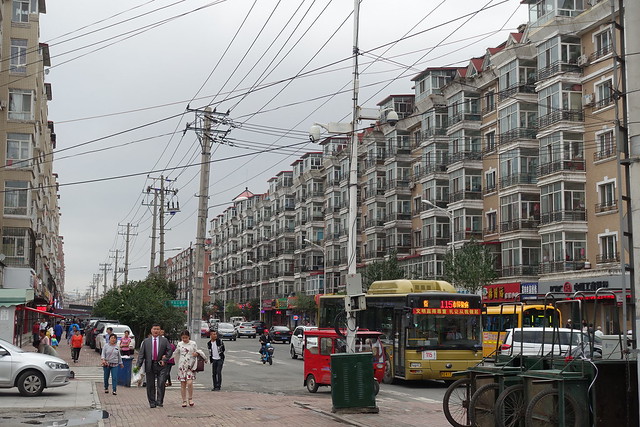

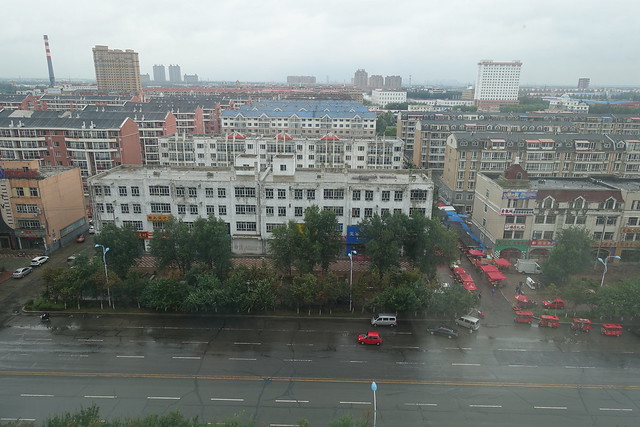

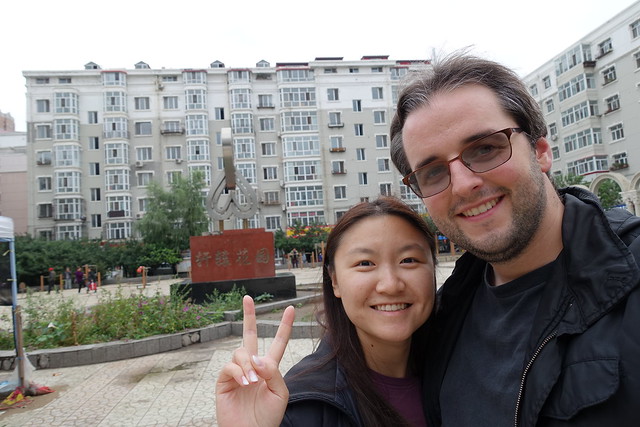 While we didn’t do as much usual tourist stuff, we did eat a lot of food. Yiyan tells me that Chinese culture and traditions are best understood through food, since physical objects can change and be destroyed, but people can always ensure their ways of cooking are passed on to the next generation. If that’s the case, I certainly was well-acquainted over my week in Harbin. What follows will be a lot of photos of food.
While we didn’t do as much usual tourist stuff, we did eat a lot of food. Yiyan tells me that Chinese culture and traditions are best understood through food, since physical objects can change and be destroyed, but people can always ensure their ways of cooking are passed on to the next generation. If that’s the case, I certainly was well-acquainted over my week in Harbin. What follows will be a lot of photos of food.
Home cooked meal:
Build-Your-Own Hot Pot Fast Food:
BBQ Pork Feet & Shoulder:
Russian Food:
Sweet & Sour Pork (Harbin’s specialty dish):
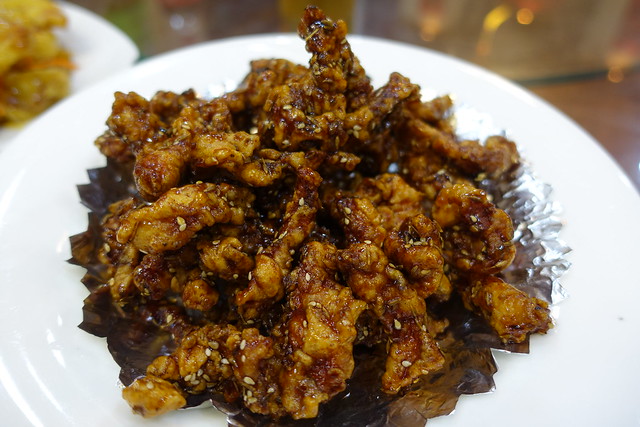 Fried Fish (not as scary as it looks):
Fried Fish (not as scary as it looks):
Dumplings (customary as a “farewell” meal):
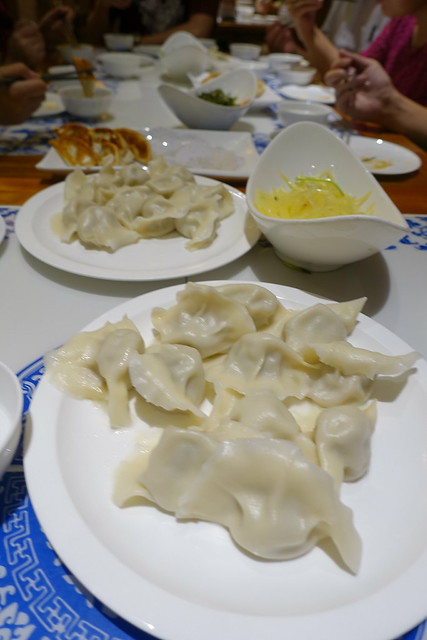 And even handmade candy shaped like a dragon:
And even handmade candy shaped like a dragon:
The historic city center along Central Street and the adjoining promenade by the Songhua River is a much nicer area for tourists to explore. Prior to the Communist Revolution, Harbin was one of China’s most ethnically diverse and industrialized cities, largely due to the proximity to Russia. The Trans-Siberian Railway was first connected to Harbin in 1903 while the rest of China was still relatively isolated. There are still numerous Russian/European style buildings dating back to the 1900’s to 1920’s that can be seen along Central Street.
Here’s the historic interior of the Russian restaurant we tried.
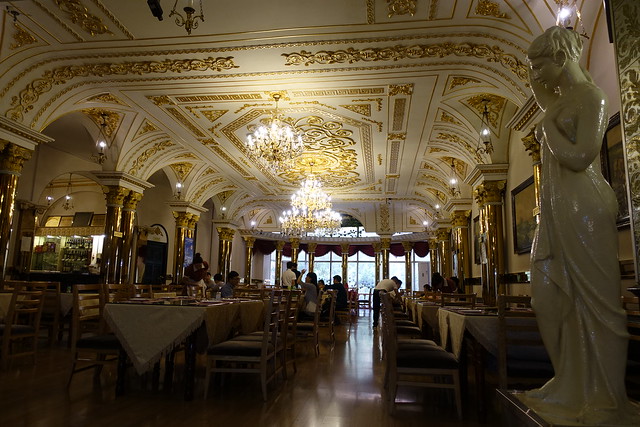 In a large central plaza is the Saint Sophia Cathedral, a former Russian Orthodox church dating back to 1907, and probably Harbin’s most distinctive historic building.
In a large central plaza is the Saint Sophia Cathedral, a former Russian Orthodox church dating back to 1907, and probably Harbin’s most distinctive historic building.

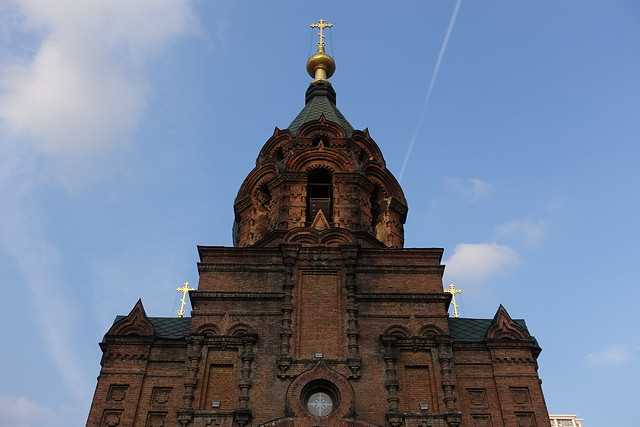

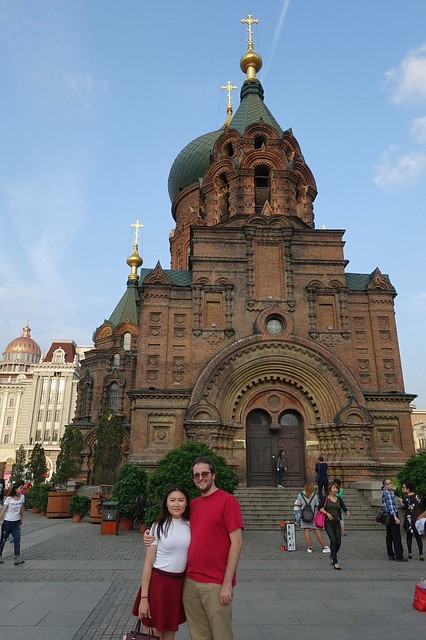
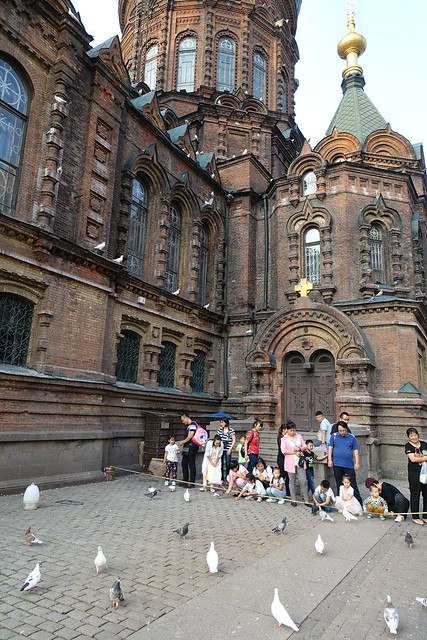
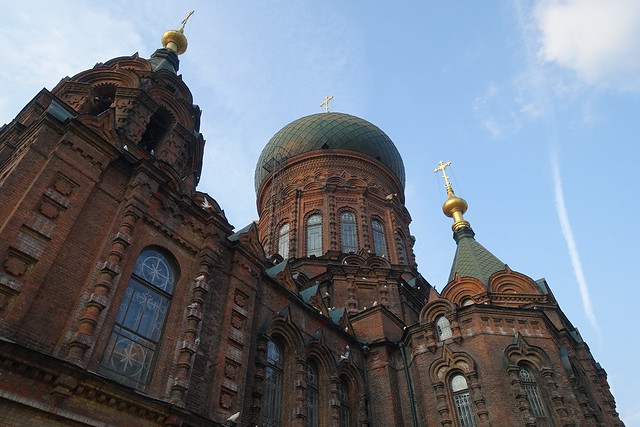
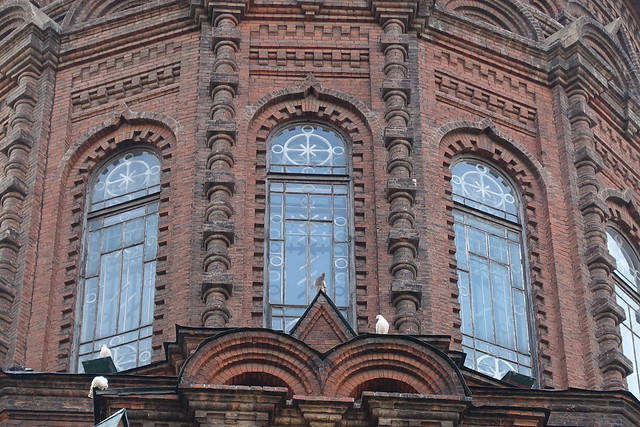
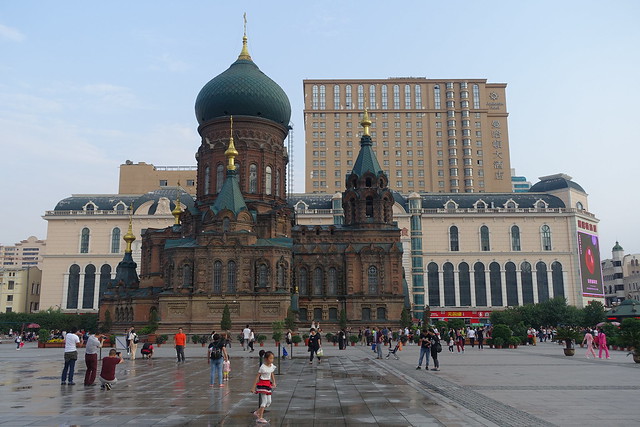 Russian Cyrillic signage is probably just as if not more common around Harbin as English.
Russian Cyrillic signage is probably just as if not more common around Harbin as English.
If you find yourself existing in the pool, please try to exist somewhere else.
 KFC is everywhere in China, even in some of its most historic buildings.
KFC is everywhere in China, even in some of its most historic buildings.
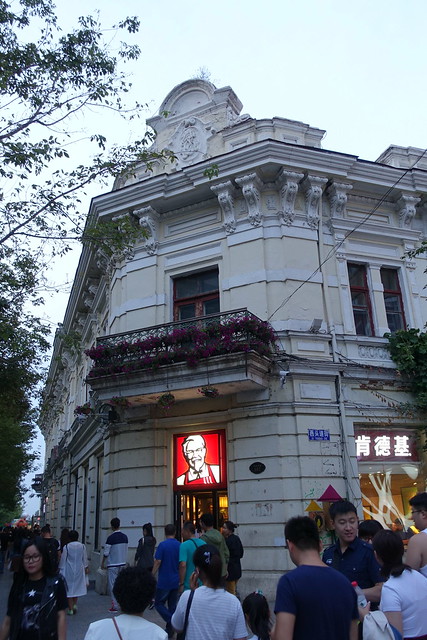 Approaching the Songhua Riverfront in Stalin Park.
Approaching the Songhua Riverfront in Stalin Park.
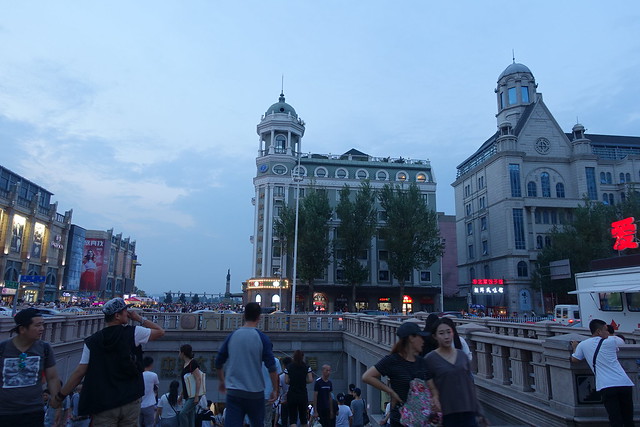


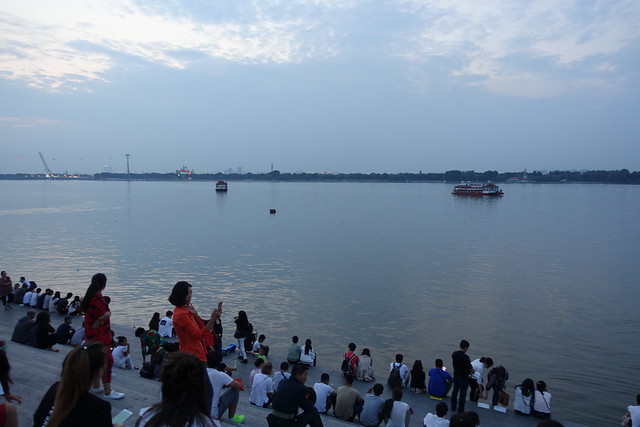


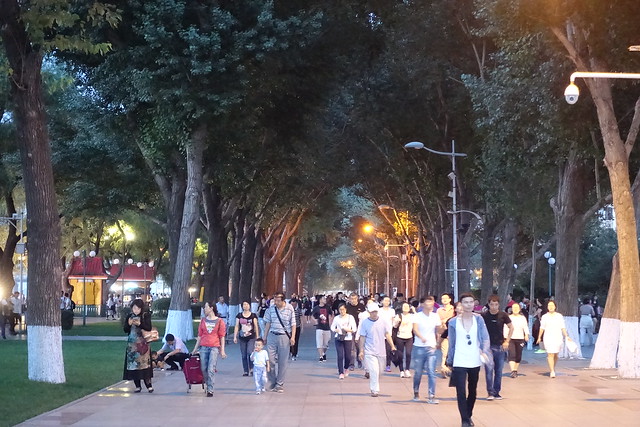 This fountain commemorates the victims of floods that came through in 1932, 1957, and 1998. It’s now a musical fountain show at night, sort of the Harbin version of World of Color.
This fountain commemorates the victims of floods that came through in 1932, 1957, and 1998. It’s now a musical fountain show at night, sort of the Harbin version of World of Color.


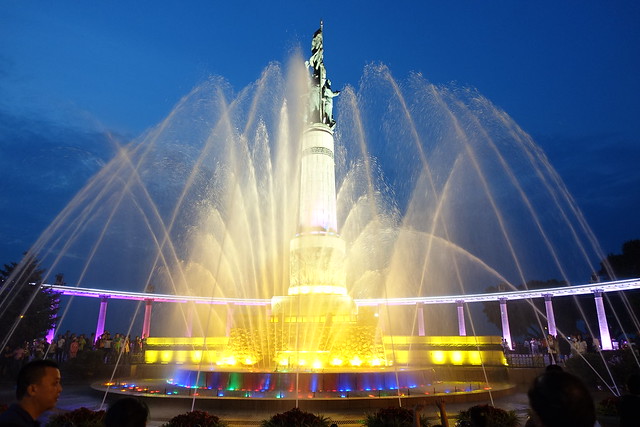 These perimeter fountains are located just a little too close to the viewing areas. When they turned on, all the children that wanted a good view got sprayed in the face and ran away screaming. It was delightful.
These perimeter fountains are located just a little too close to the viewing areas. When they turned on, all the children that wanted a good view got sprayed in the face and ran away screaming. It was delightful.
Walking back through Central Street at night.
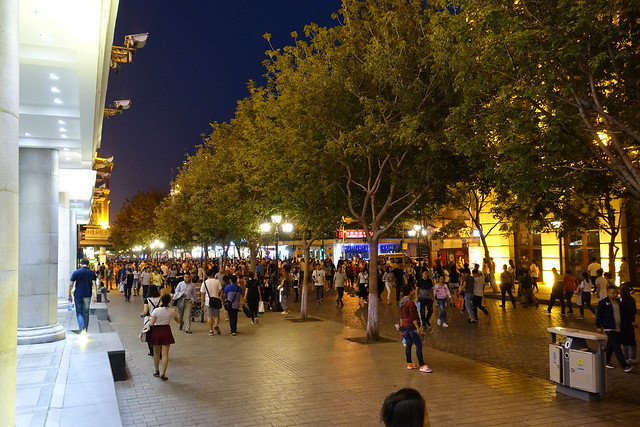 The Harbin Grand Theatre opened in 2015 by Beijing-based MAD Architects. While we didn’t see a performance there, we did tour around the structure which has to be the nicest work of architecture in the region.
The Harbin Grand Theatre opened in 2015 by Beijing-based MAD Architects. While we didn’t see a performance there, we did tour around the structure which has to be the nicest work of architecture in the region.
The Harbin Grand Theatre is in the middle of a natural wetland in the middle of the Songhua River.
While there’s some similarity to the Sydney Opera House, the structure is designed to evoke the ice and snow drifts that Harbin is known for in the winter.
If you noticed, there’s even a sightseeing pathway that takes you up and around the entire structure, including a hidden caldera at the top. I really appreciate the effort to make the architecture not just a passive aesthetic object but something much more experiential, even for those without a ticket to go inside.
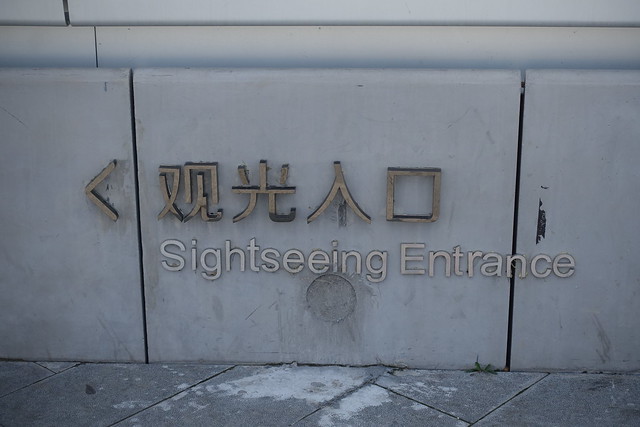
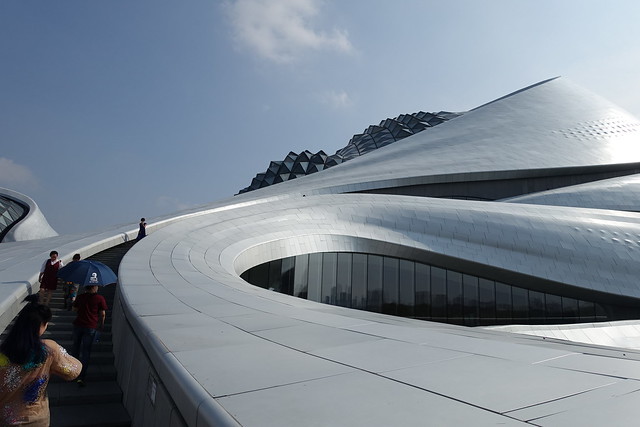
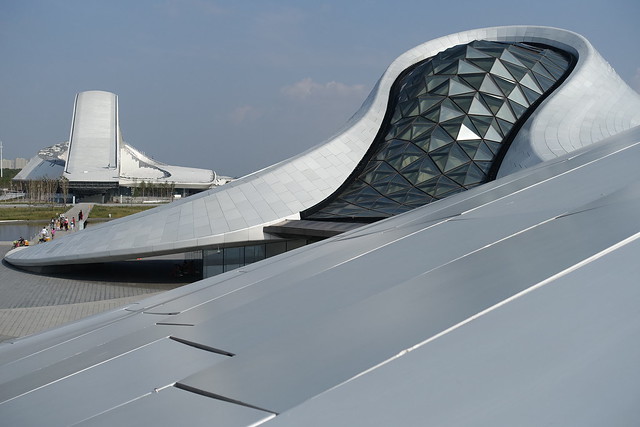
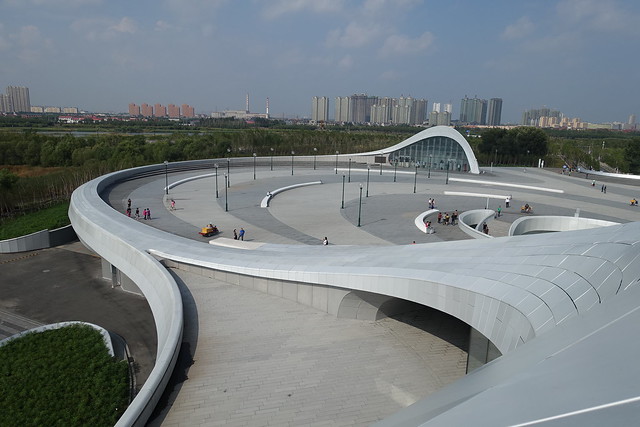

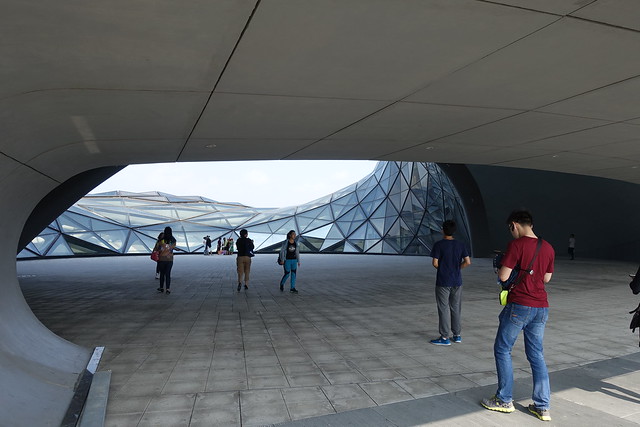

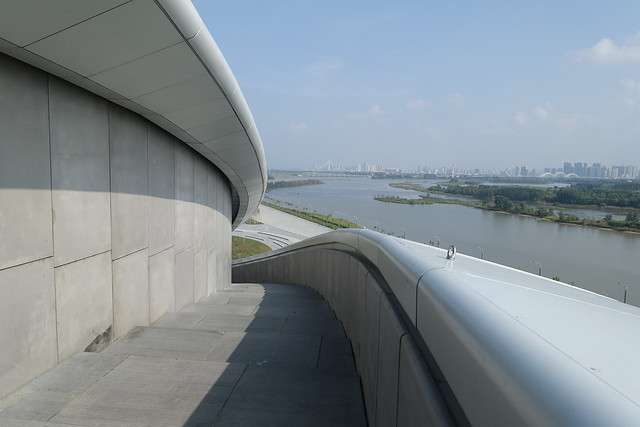

 Lastly, there’s SongSong Town. SongSong Town is a children’s themed development that since 2015 occupies the third floor of a mall in Harbin called LeSong Plaza. Normally it’s not a place I would recommend any adult tourists visiting Harbin to visit. However, I have a special connection to SongSong Town, because it was the first project I ever worked on after starting my creative career at Thinkwell to open in the real world. And by an incredible coincidence, it was in my wife’s hometown.
Lastly, there’s SongSong Town. SongSong Town is a children’s themed development that since 2015 occupies the third floor of a mall in Harbin called LeSong Plaza. Normally it’s not a place I would recommend any adult tourists visiting Harbin to visit. However, I have a special connection to SongSong Town, because it was the first project I ever worked on after starting my creative career at Thinkwell to open in the real world. And by an incredible coincidence, it was in my wife’s hometown.
A lot of people might picture every themed design project as a total turnkey operation with a centralized group of designers overseeing it from beginning to end. That’s rarely the case, especially among independent design firms. In this case, we were able to start with concept and take it up to roughly the schematic level of design, but the translation into detailed design work and installation was done entirely within China. The project evolves considerably during these translations, which the original design firm has little control over. Bear that in mind when you see it. (ParkWorld published a more in-depth write-up with the owner of the project, a charismatic gentleman known to us as Mr. Song, if you’re interested in learning more about the project.)
I think that a core part of being human is our desire to see our work and our identity meaningfully manifested in the world. Since working on a number of projects including SongSong Town, I’ve noticed that the degree of involvement one has in a project can be thought of at roughly five different levels:
- Your work completely determines the project’s vision, if not the fact of its very existence.
- Your work strongly influences the project’s final manifestation in a way that reflects your individual tastes.
- Your work is visible within the final manifestation as part of your particular execution of a given direction.
- Your work is important to the project’s completion, but does not uniquely affect the final manifestation.
- Your work is inessential to the project’s completion, due to being cut or part of a process inefficiency.
Obviously many creative people will desire level 1, but most will spend their careers happily working at level 2 or 3. At entry-level, you’ll typically be satisfied if you can just get level 4 instead of 5. Most forms of Level 1 fulfillment come from personal side-projects you’re unlikely to see any money from. In fact, very large projects might not have anyone contributing at level 1, since the power distribution will be diluted over too many individuals for any one person to be able to have a unique claim of authorship over the final product.
My involvement on SongSong Town was mostly around level 4, with a fair amount of 5 and a very tiny bit of 3 that I’ll point out later. For the most part I wrote the words that described the design narrative, but I did extremely little to shape the creative vision of the design itself, the vast majority of which came from a combination of the owner and our team’s art director. A few of the signs use my words for the English titles, but most are just direct translations of the Chinese which were provided to me. And as with any project, there were some inefficiencies and dead-ends that ultimately led nowhere. (I’ve since had the opportunity to do much more level 3 work, and maybe even to a small degree level 2.)
Because of my involvement in SongSong Town, I don’t believe it’s proper for me to provide a detailed criticism of it as I normally do for this website, nor do I think it’s really necessary for this type of attraction located somewhere few readers will ever travel. Instead I’ll try to document the end results and let the images speak for themselves:
The elevator to take us to the third floor. Originally a free experience, SongSong Town proved so popular that a small admission fee is now paid to access this level.
Not quite a theme park but more than just a themed mall floor, SongSong Town is themed as a cartoon village home to a cast of squirrels and other furry woodland creatures, featuring a variety of hands-on and active play attractions. There’s even some small rides including a dark ride, although these were all provided directly by ride vendors and Thinkwell had no involvement in these.
The mall’s owner, Mr. Song, had a strong affinity for squirrels, which he wanted as the park mascots. The two main squirrels are SongSong, the town’s gregarious mayor and jack of all trades, and LeLe, the town’s famed and glamorous celebrity squirrel. Both have longer backstories that I wrote, although they’re not really evident anywhere in the final design. As you can see there is some variation in details between the illustrated character designs Thinkwell did and some of the replications completed by local artists and fabricators.
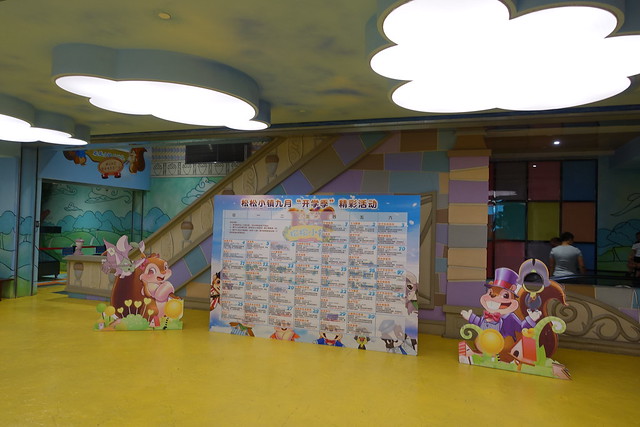
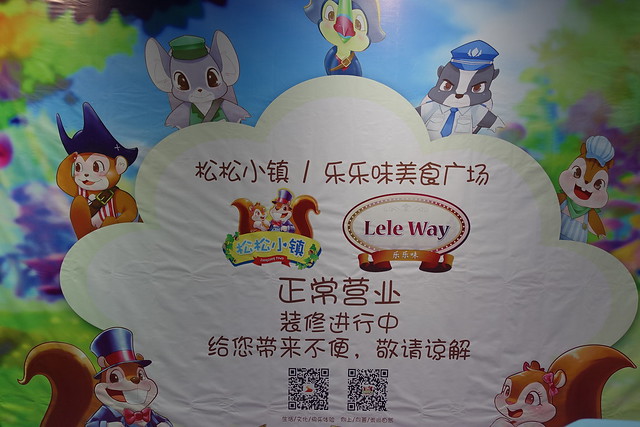

 We weren’t responsible for programming out most of the interior spaces, but most of our work was in creating the designs of the public spaces and storefront facades. Each had its own hands-on upcharge activity.
We weren’t responsible for programming out most of the interior spaces, but most of our work was in creating the designs of the public spaces and storefront facades. Each had its own hands-on upcharge activity.
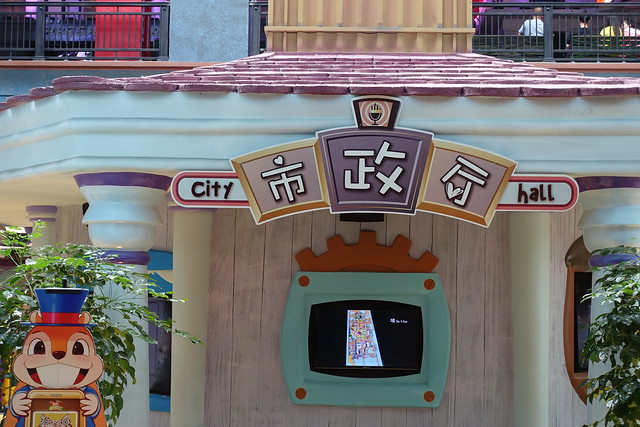
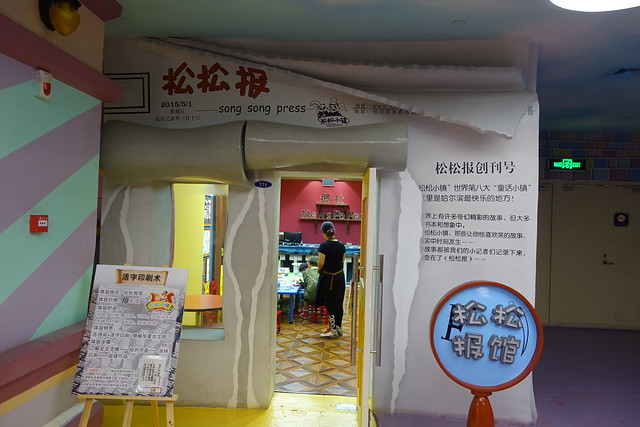

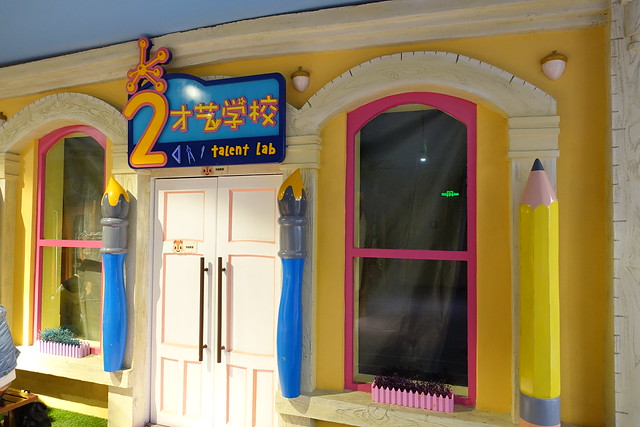

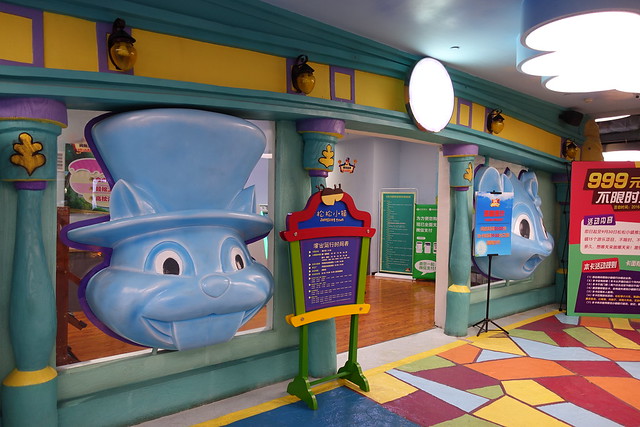
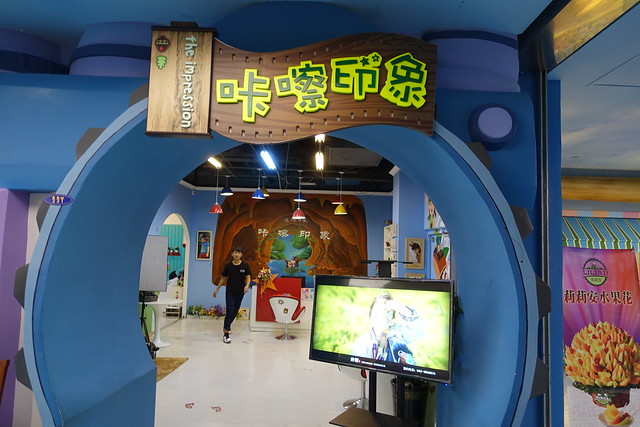 Because I’m just a writer, most of the work I did that’s visible in the final design are the names seen throughout the park. Because of the way this process worked, many of the names were given to us in Chinese with English translations that I would simply approve. “Tree Hole Food” is one such occasion. Elsewhere there’s also the “Naughty Castle”. Sometimes you can leave your mark by the decision to not act.
Because I’m just a writer, most of the work I did that’s visible in the final design are the names seen throughout the park. Because of the way this process worked, many of the names were given to us in Chinese with English translations that I would simply approve. “Tree Hole Food” is one such occasion. Elsewhere there’s also the “Naughty Castle”. Sometimes you can leave your mark by the decision to not act.
But there were still a couple of occasions where I got to make up a name which was then translated into Chinese (or, as I’m told, was just given a separate simple Chinese title). Here’s one of the them! “The Fat Cheek Bistro”! Cute, right?
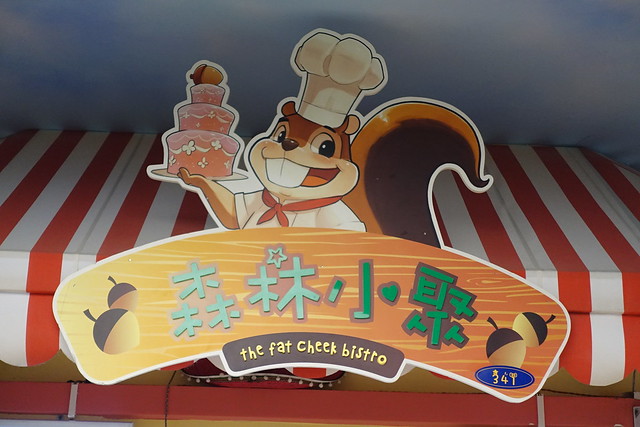
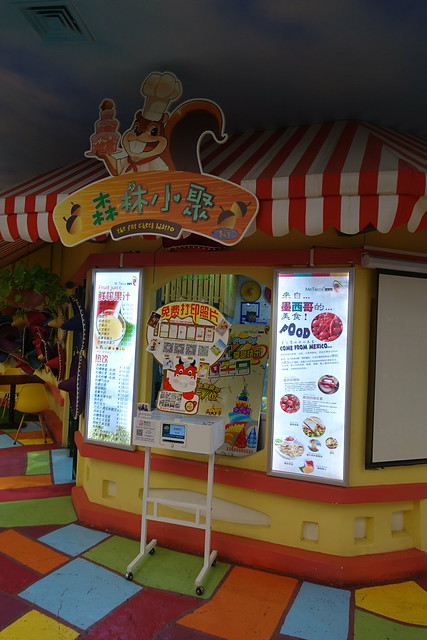 On the far side of the floor is this forested sub-zone.
On the far side of the floor is this forested sub-zone.
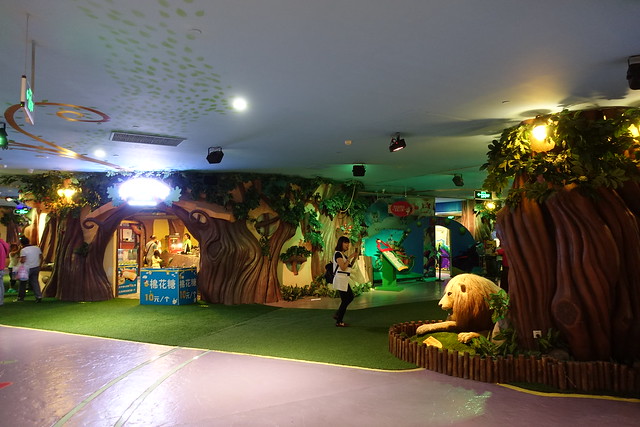

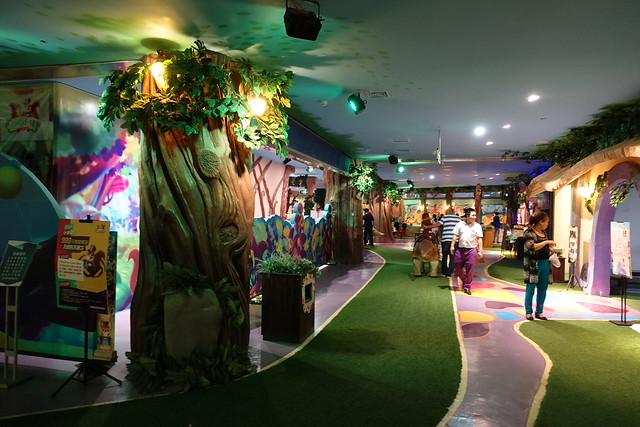
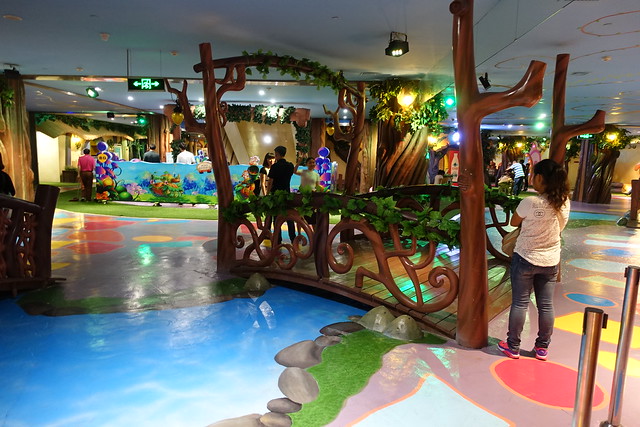
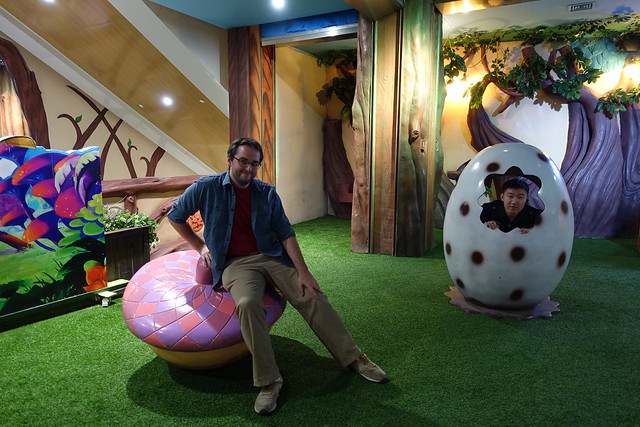

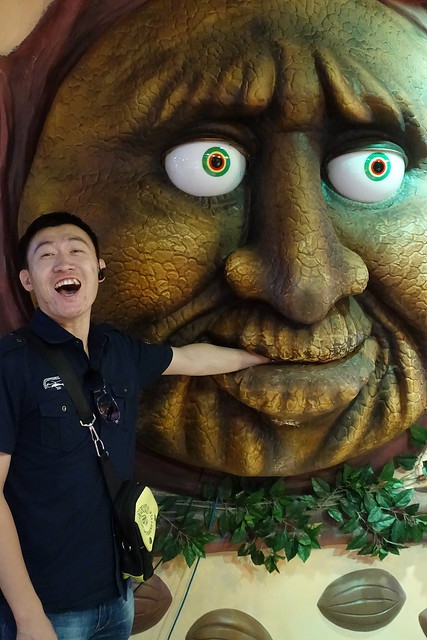 Pirate Baby is a toddler play area that was a late addition to the design process.
Pirate Baby is a toddler play area that was a late addition to the design process.
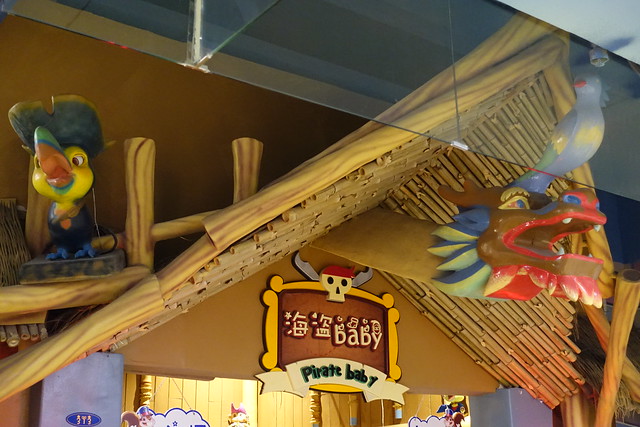
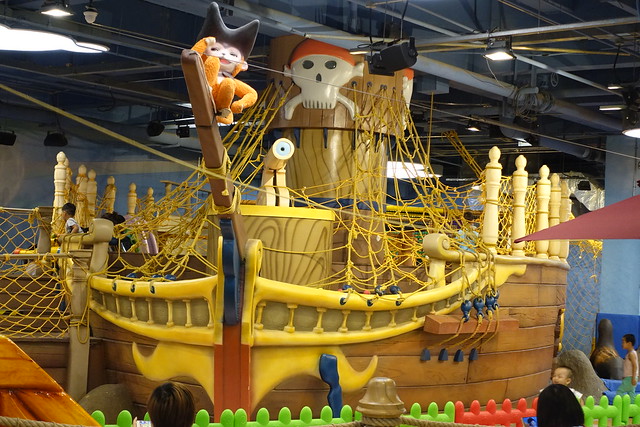

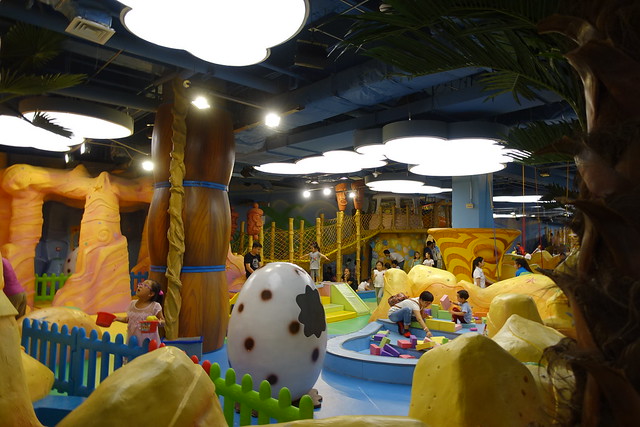
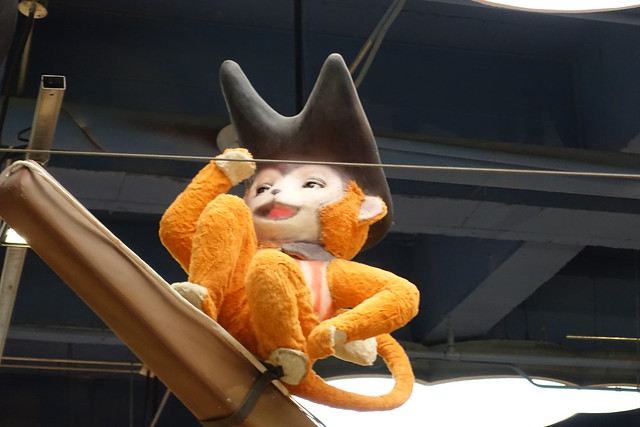 There’s also a trackless miniature railway that runs around the floor.
There’s also a trackless miniature railway that runs around the floor.
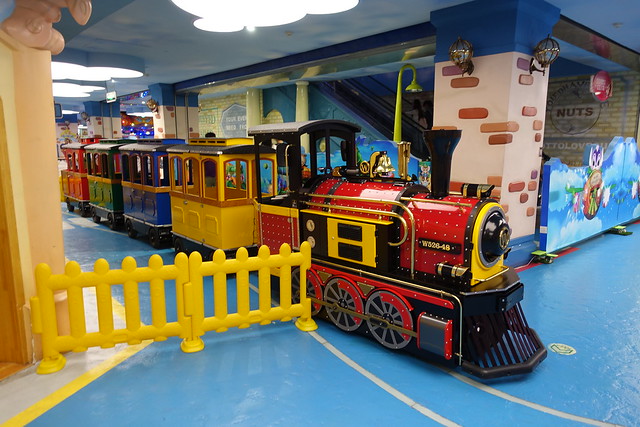
 Certain elements were added after the original design.
Certain elements were added after the original design.
Several gift stores offer SongSong Town merchandise featuring Mayor SongSong and LeLe, as well as a few other characters. I picked up a few small items as keepsakes from my first project.
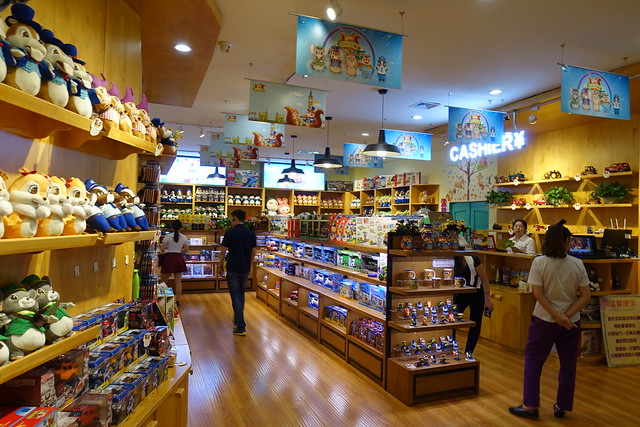

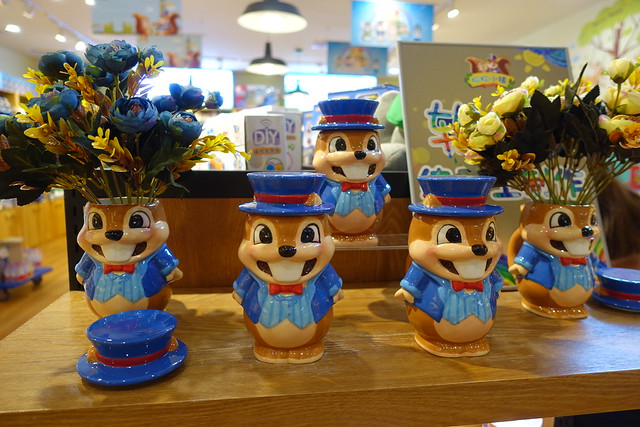
 This fun map shows the layout of the entire floor. The Big Ben at the center penetrates up into the fourth floor.
This fun map shows the layout of the entire floor. The Big Ben at the center penetrates up into the fourth floor.
This video will give you closer to the full SongSong Town experience.
Peering up at Big Ben to the fourth floor.
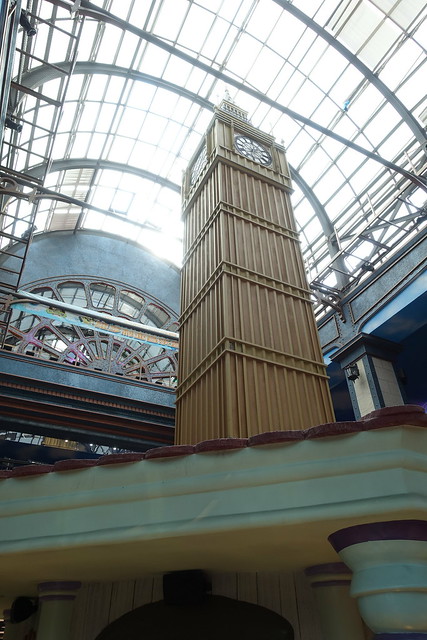 SongSong Town isn’t all we did. On the upper fourth floor is LeLe Way which, despite being named after the character on the third level, is home to three European street styled neighborhoods based on London, Paris, and Rome. This floor is free admission and contains a more usual selection of cafes and restaurants. London (named “Victoria Plaza”) is at the center with this replica of Big Ben connecting the two floors.
SongSong Town isn’t all we did. On the upper fourth floor is LeLe Way which, despite being named after the character on the third level, is home to three European street styled neighborhoods based on London, Paris, and Rome. This floor is free admission and contains a more usual selection of cafes and restaurants. London (named “Victoria Plaza”) is at the center with this replica of Big Ben connecting the two floors.
The French zone was named Parc de Paris after much consultation with Google Translate. A “nighttime” light and sound show plays throughout the day.
Lastly, there is Piazza Roma (thank you two years of college Italian classes!), which appeared to be undergoing a renovation when I was there.

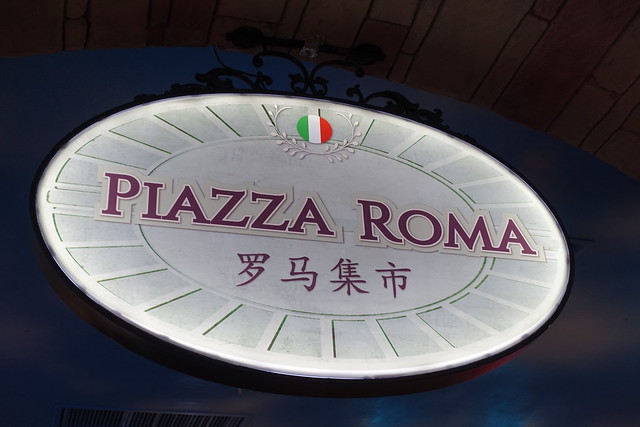
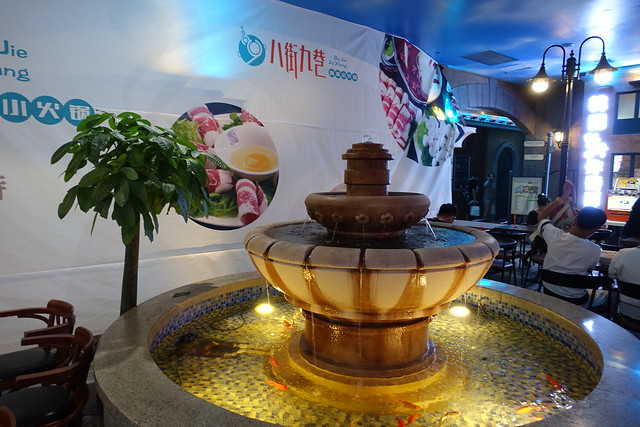
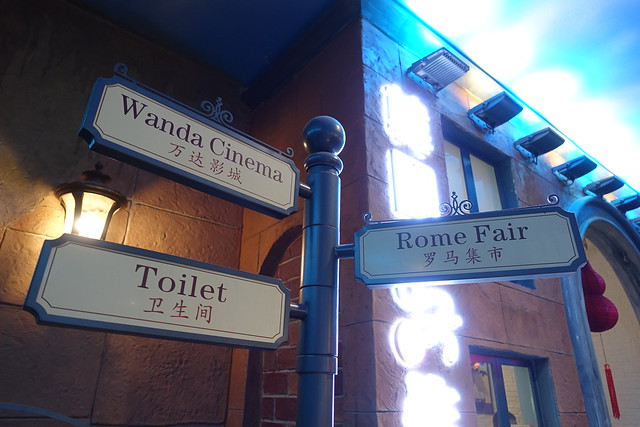 With that, the tour is complete. For some reason the last photo I took on the way out was this image of the characters being suffocated by a plastic bag.
With that, the tour is complete. For some reason the last photo I took on the way out was this image of the characters being suffocated by a plastic bag.
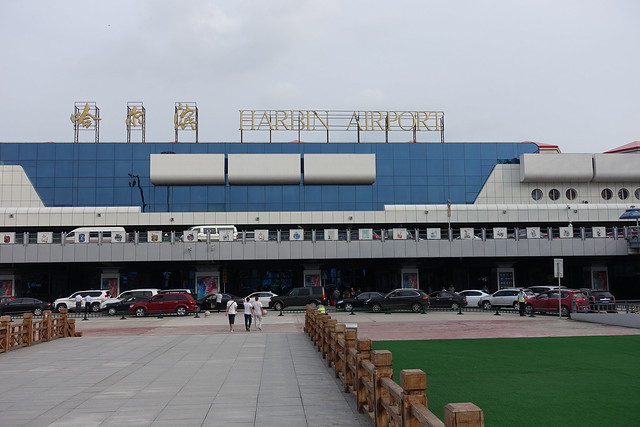
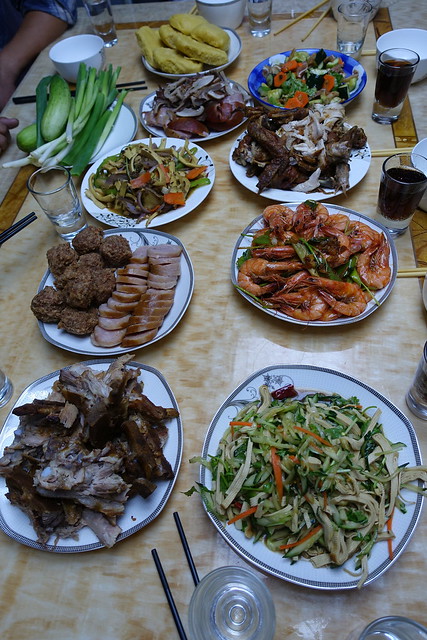
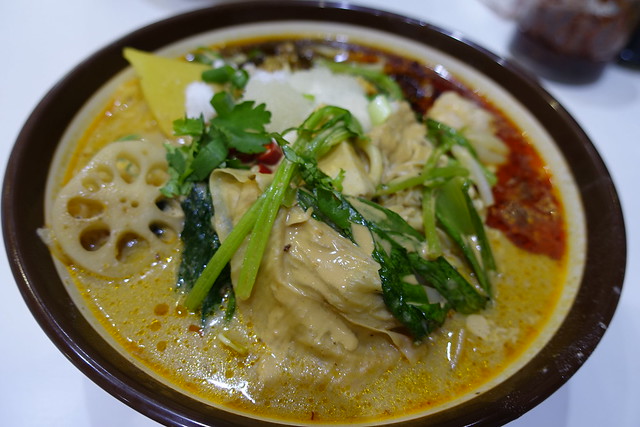
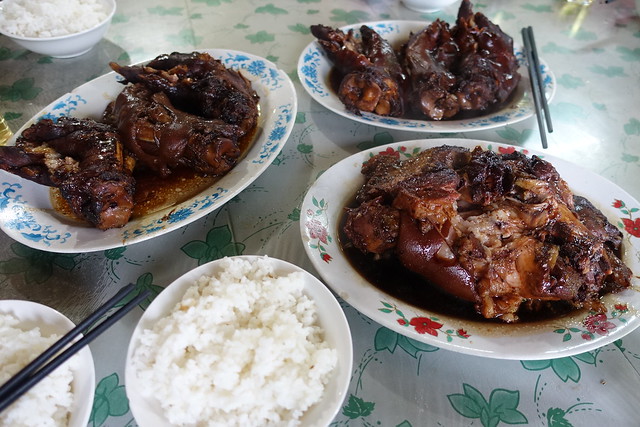

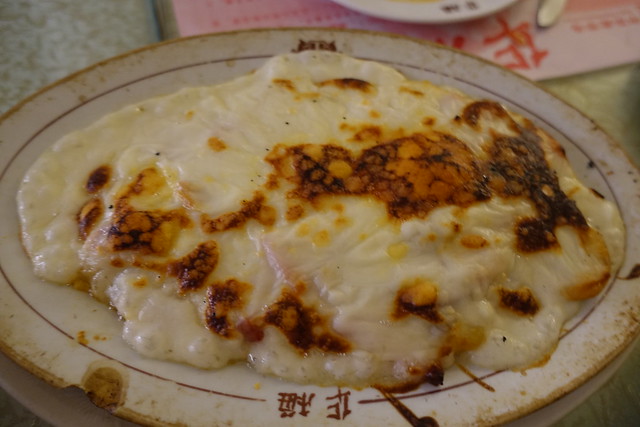

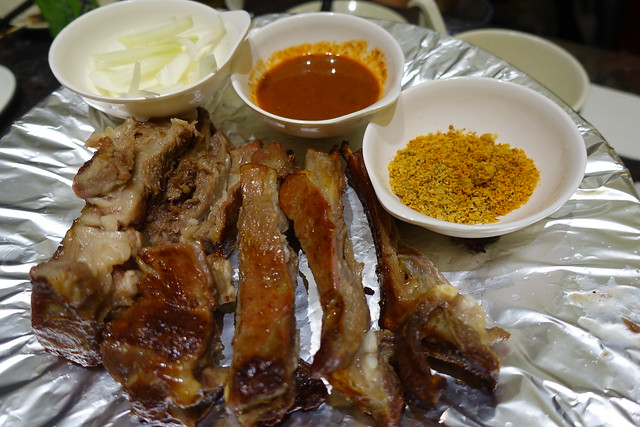


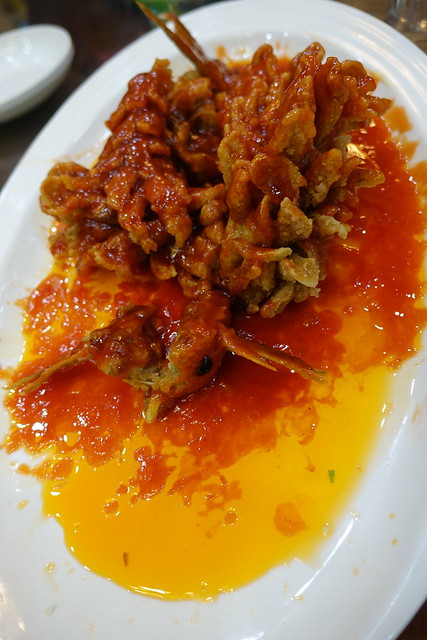

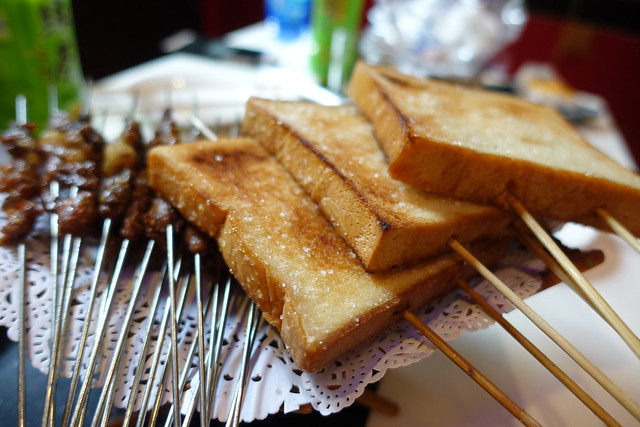
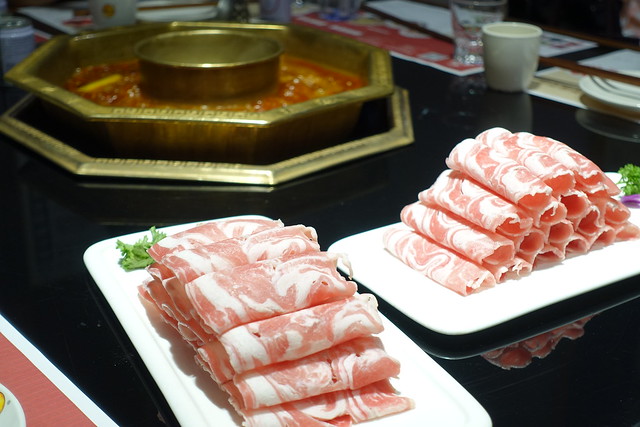
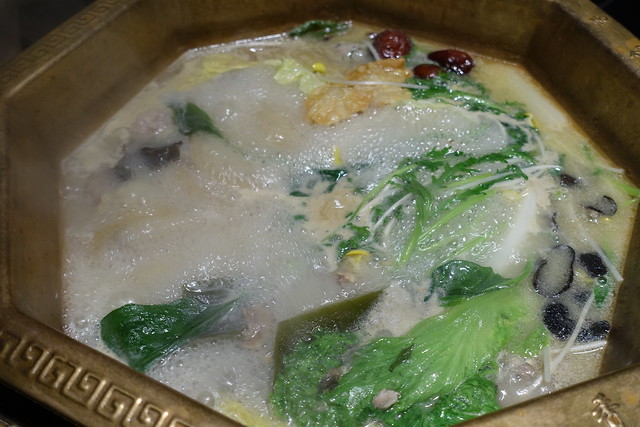
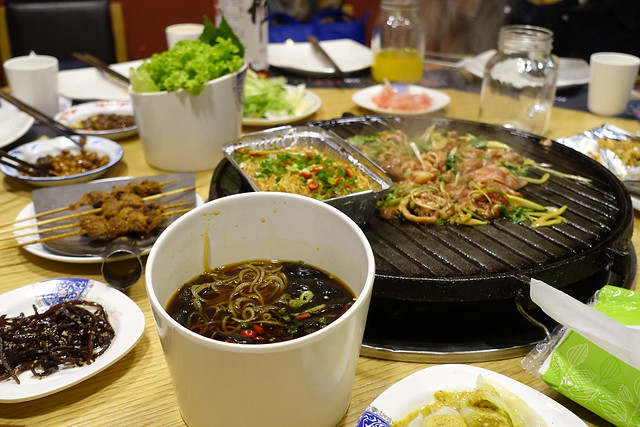
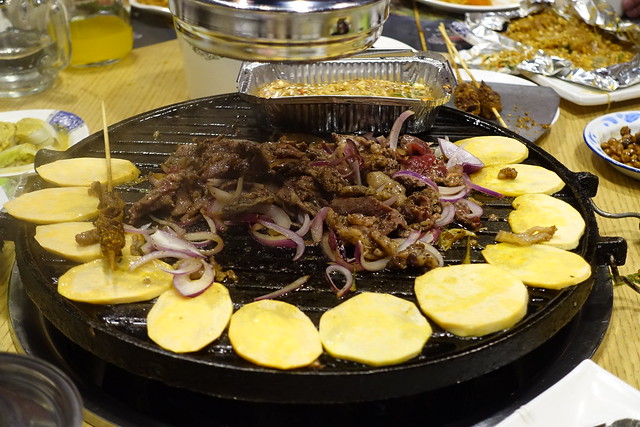

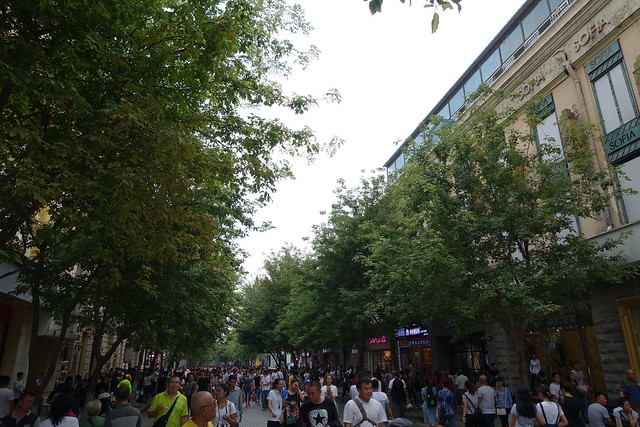
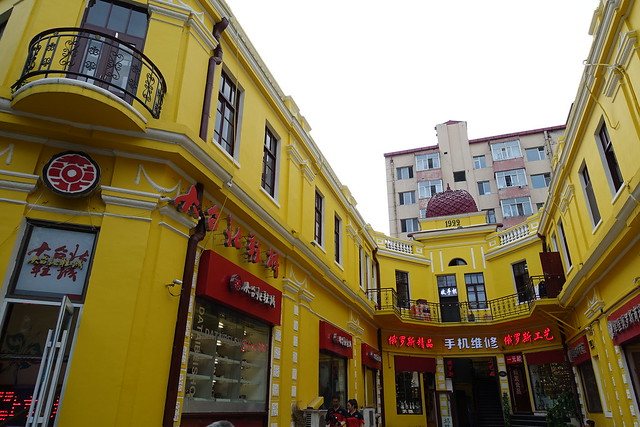
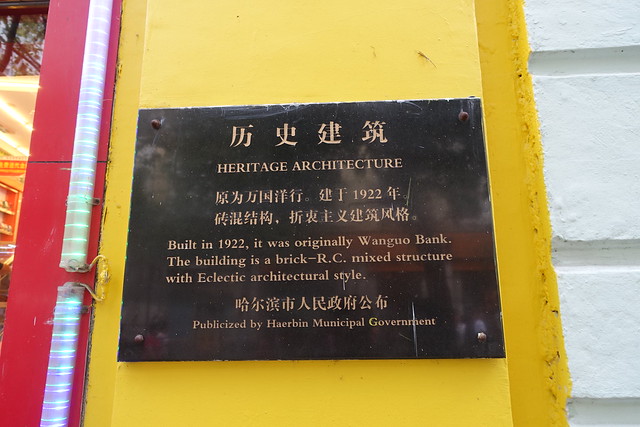
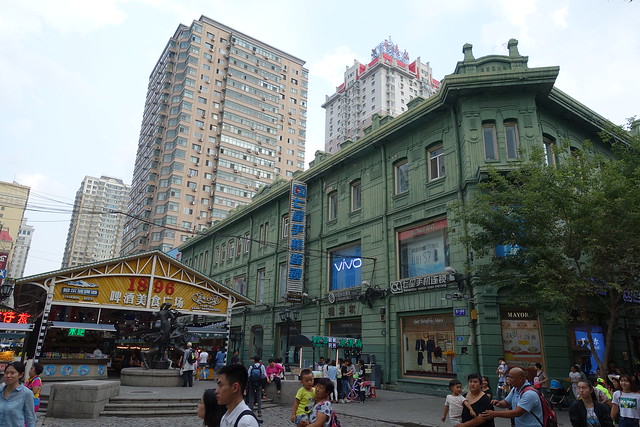
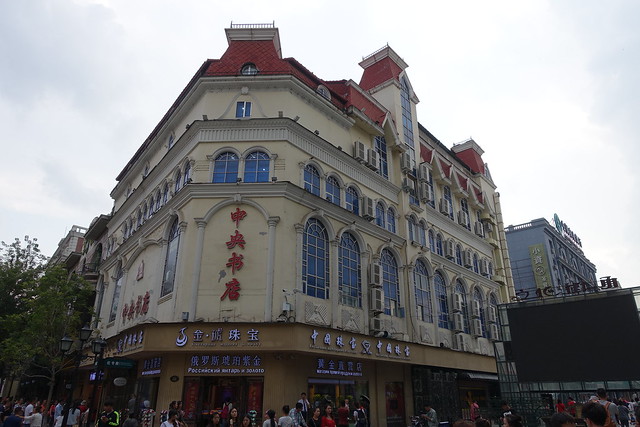
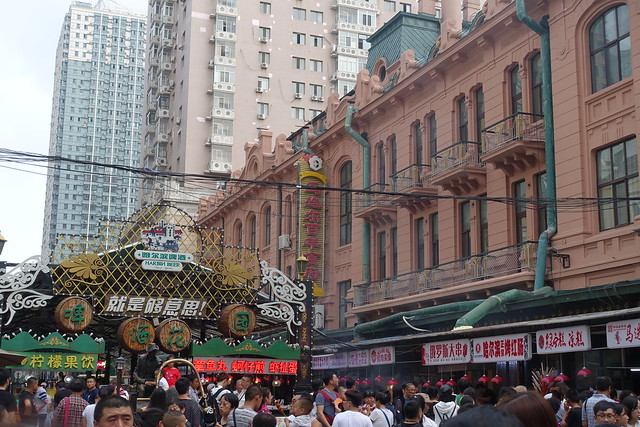
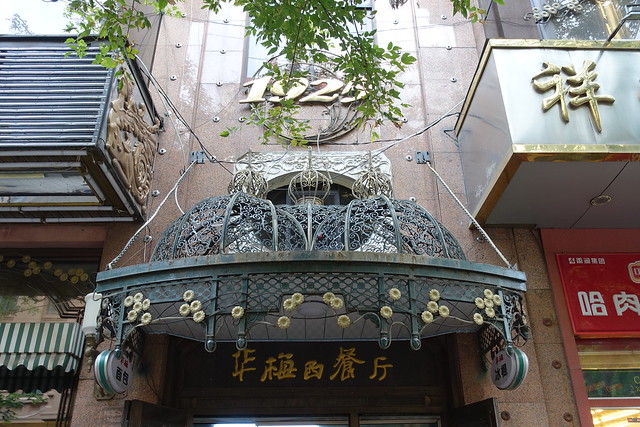
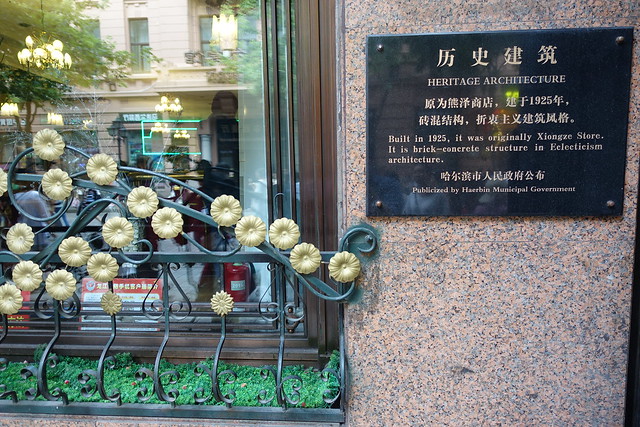
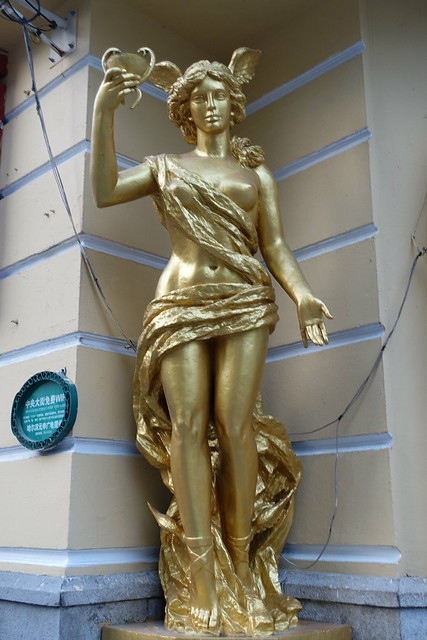

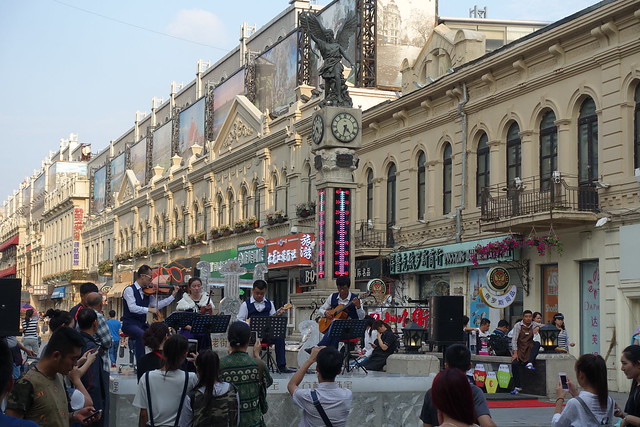
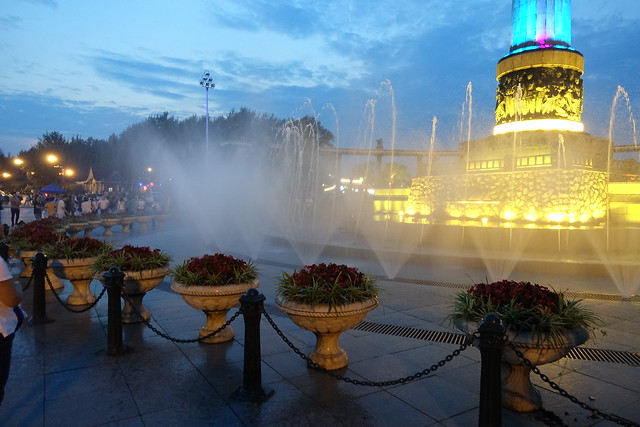

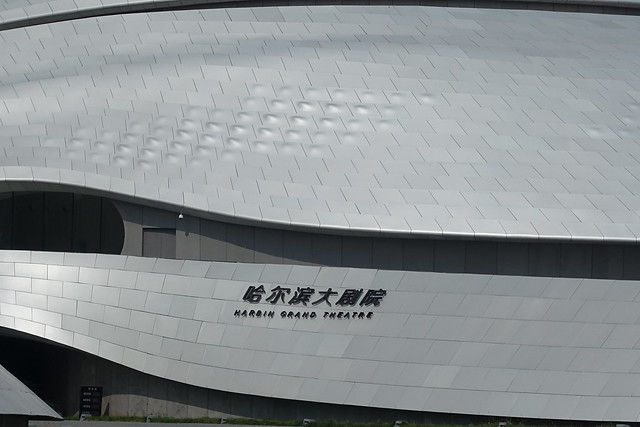

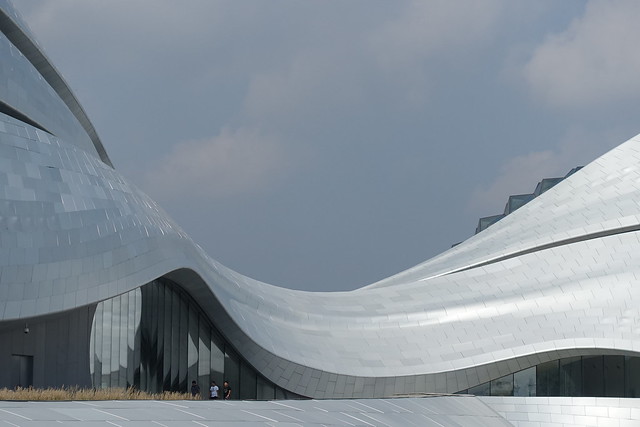
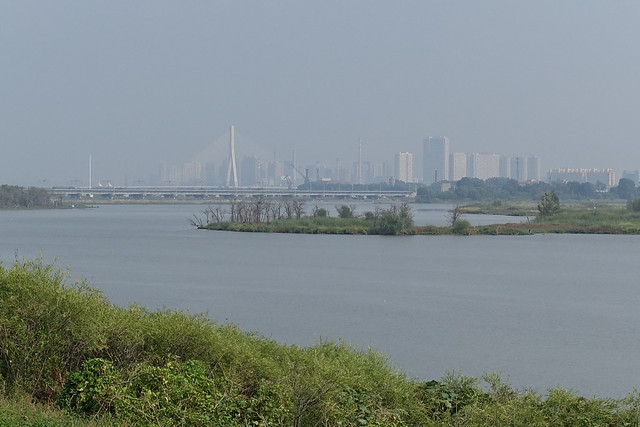
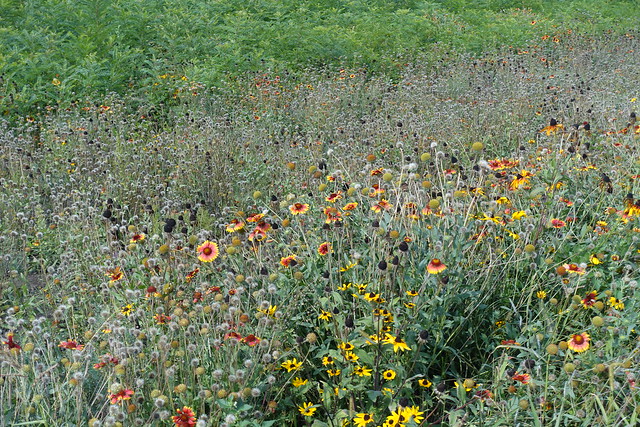
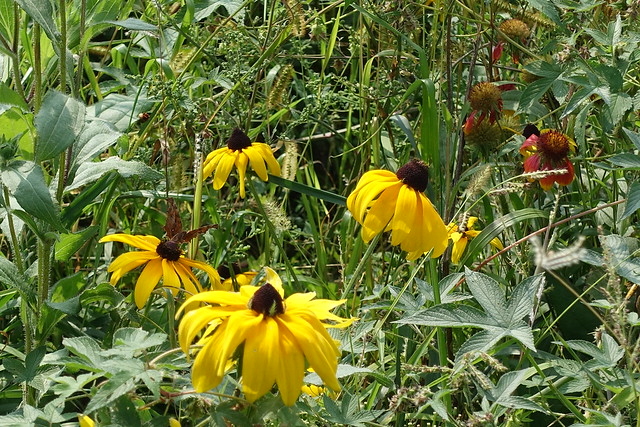
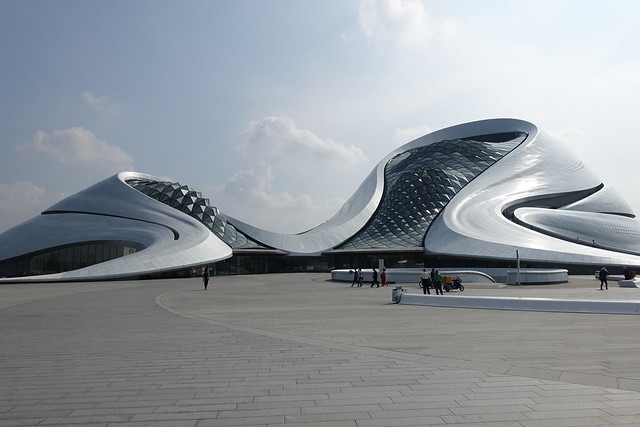
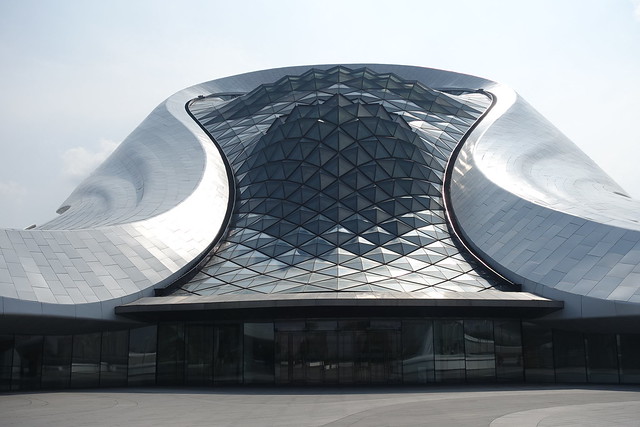
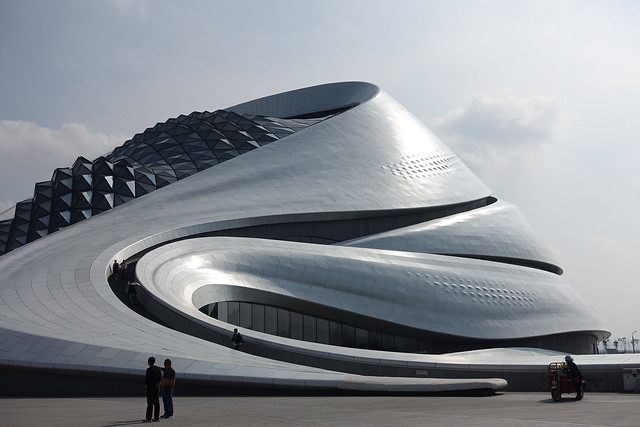
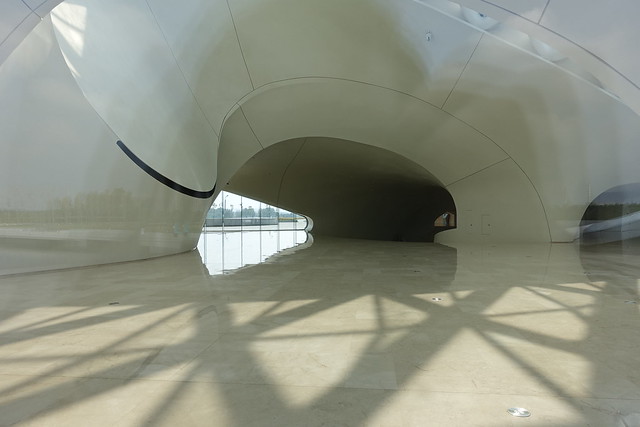


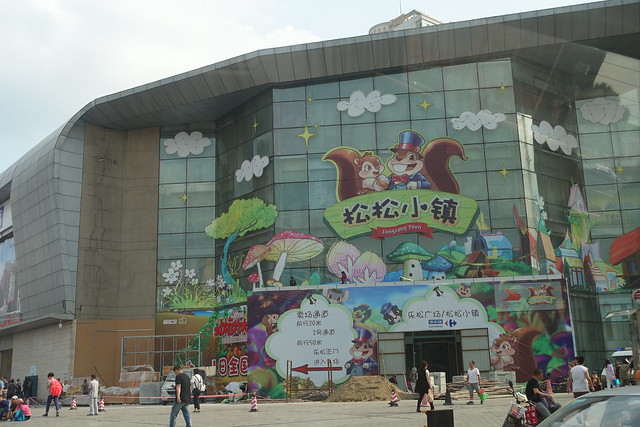

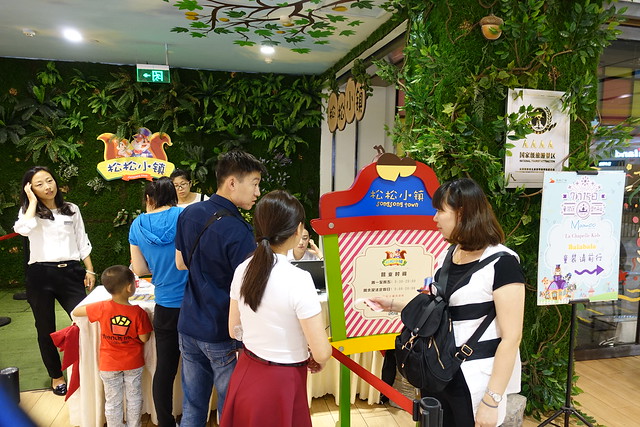
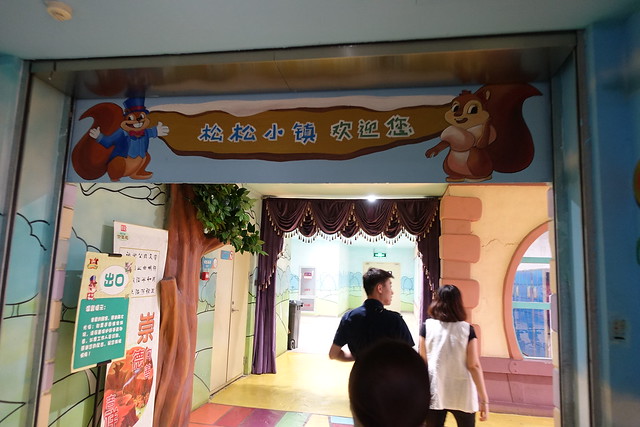

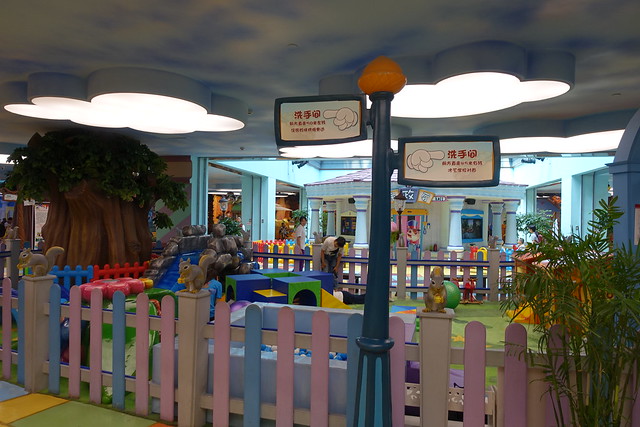
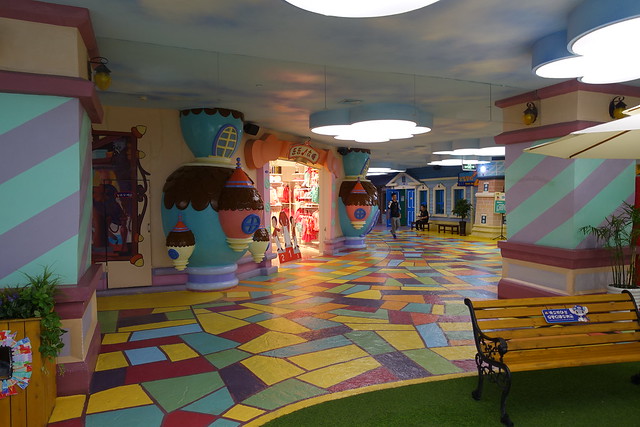



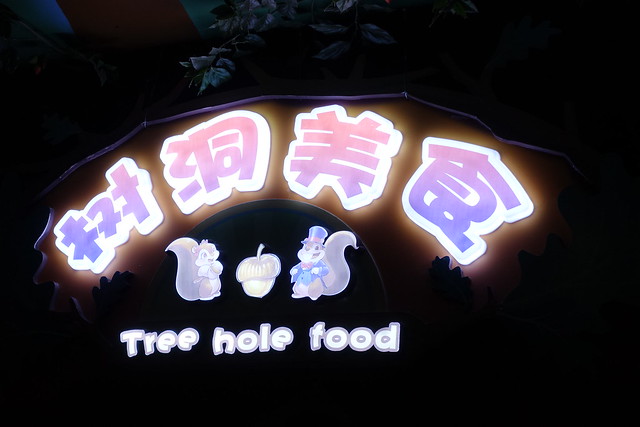
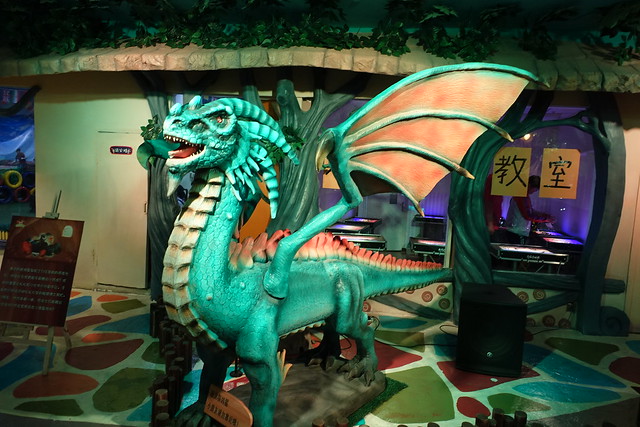
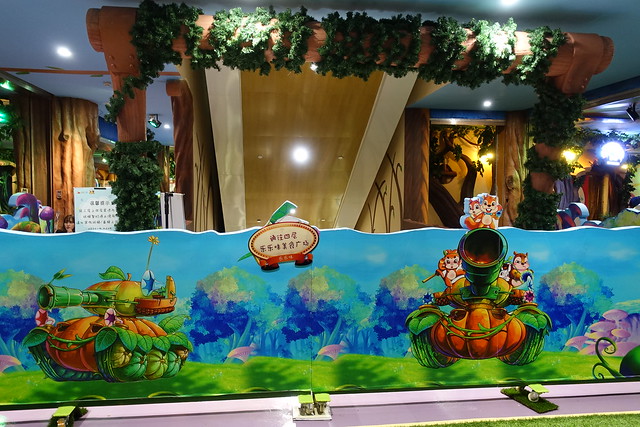



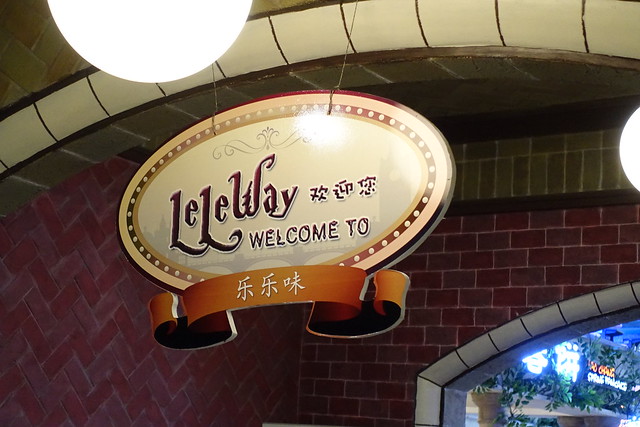
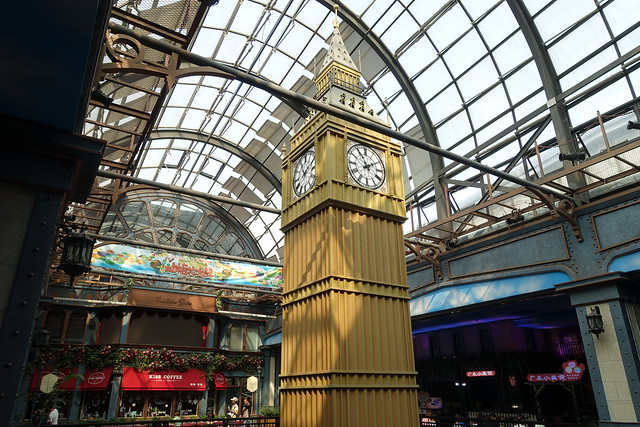

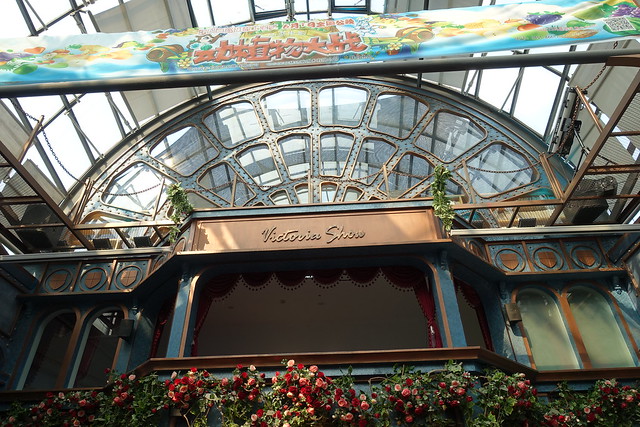
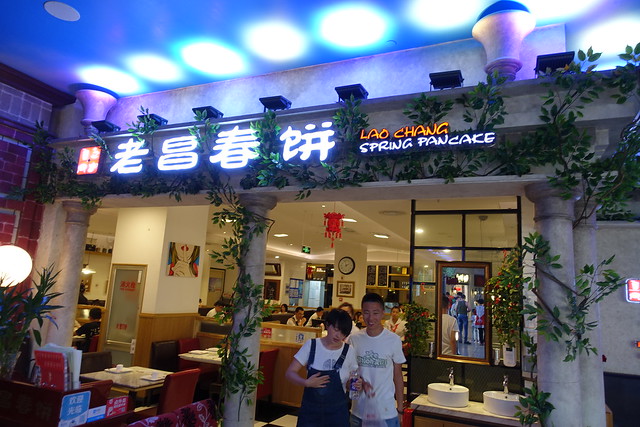

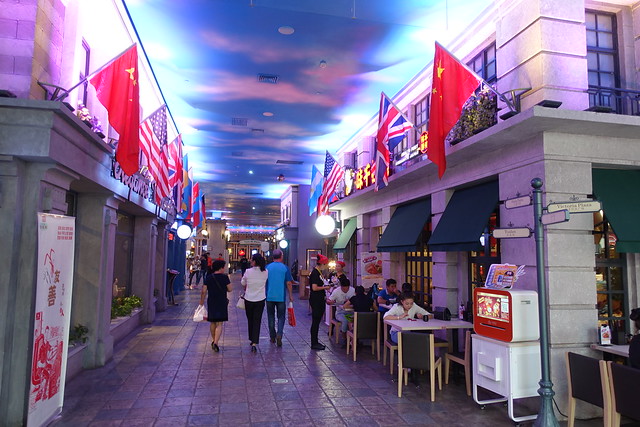
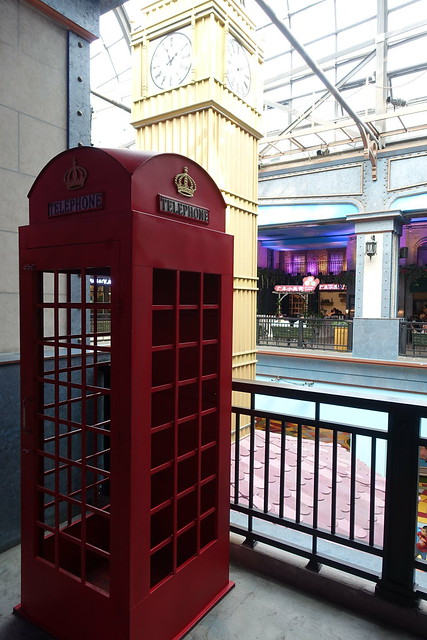
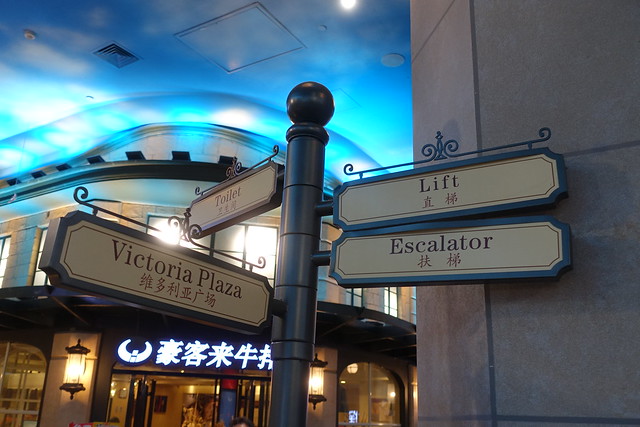
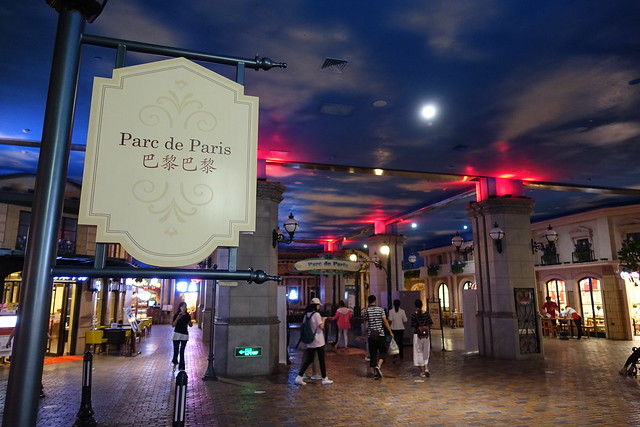
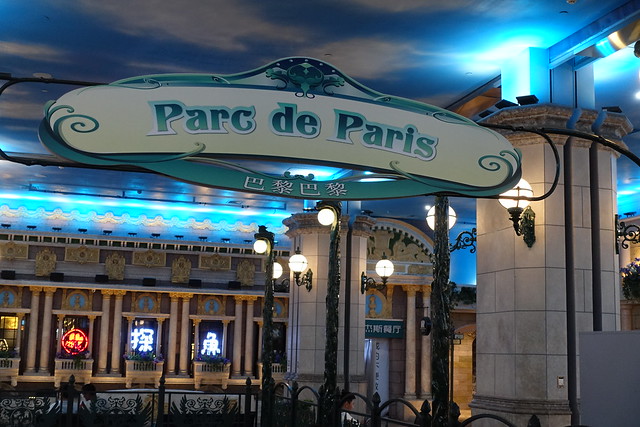
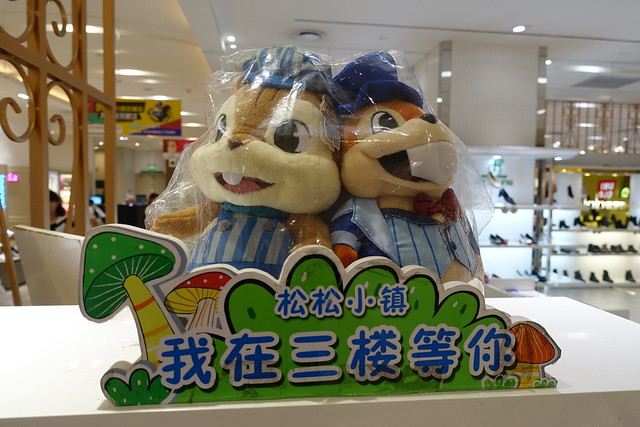
Comments